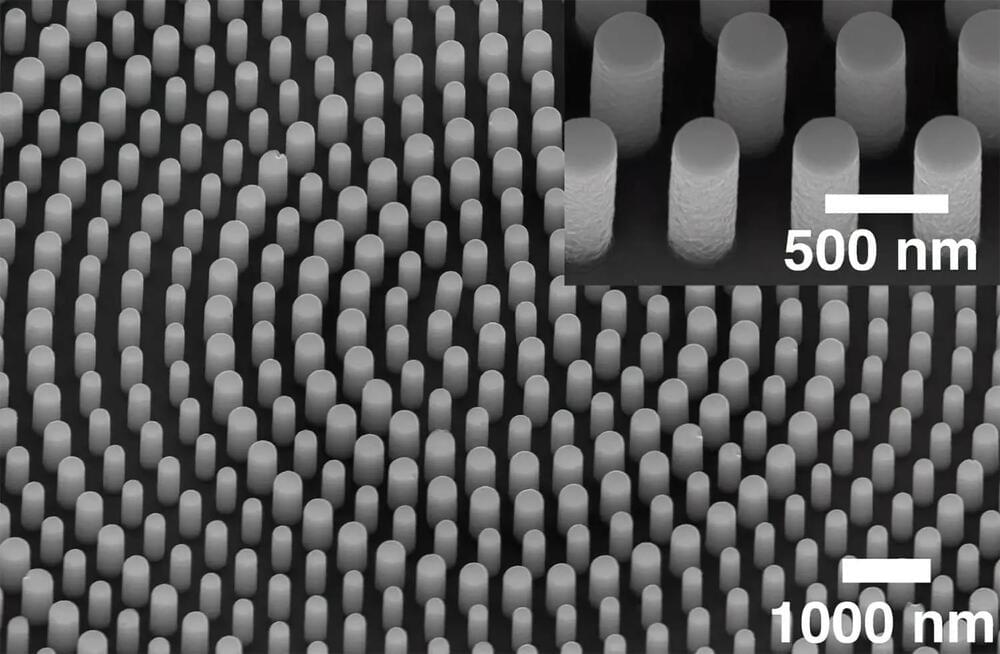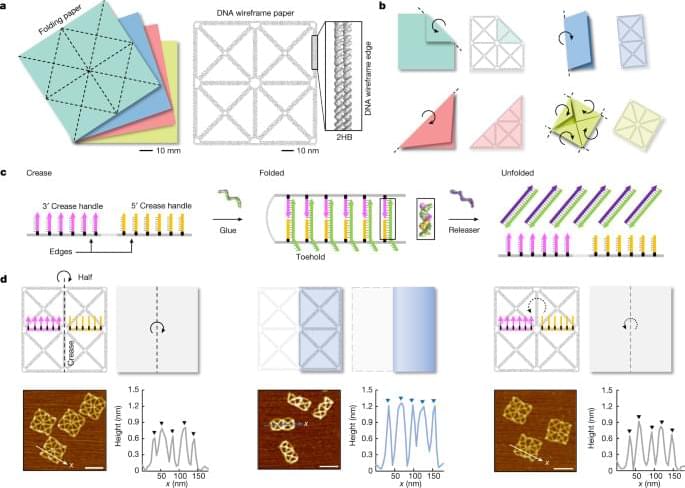Subtle shifts in stellar signals reveal pervasive waves from mergers of giant black holes.


By now, it should not be breaking news that Tesla is boldly entering the trucking industry with the semi-truck. Elon Musk wants to leave no stone unturned in his quest to up-end industries for the better.
He is not just doing that by producing more advanced and efficient vehicles for the future, he’s also doing it with the kind of factories he builds to produce those vehicles. A factory as big as 138 football fields combined. Boardwalk with hike and biking trail.
Ecological paradise with birds in the trees, butterflies, and fish in the stream. The semi-truck is nothing like what the industry has ever seen. And that’s not even the most interesting part. Why? We will fill you in on all the details in just a sec. Let’s get right into it.
Joby Aviation has been cleared by the FAA (Federal Aviation Authority) to start flight tests on its first production prototype air taxi, the company wrote in a press release. It’s a large step in the company’s aim to start shipping the eVTOL aircraft (electric vertical takeoff and landing) to customers in 2024 and launch an air taxi service by 2025.
“The aircraft will now undergo initial flight testing before being delivered to Edwards Air Force Base, California, where it will be used to demonstrate a range of potential logistics use cases,” Joby wrote.
The aircraft can take off and land like a helicopter, then tilt its six rotors horizontally and fly like an airplane at up to 200 MPH. It’s designed to carry a pilot and four passengers over a distance up to 100 miles on a charge — enough range for most types of air taxi operations. At the same time, Joby claims it’s nearly silent in cruise mode and 100 times quieter than conventional aircraft during takeoff and landing.
Researchers from the University of Tokyo pool knowledge of robotics and tissue culturing to create a controllable robotic finger covered with living skin tissue. The robotic digit has living cells and supporting organic material grown on top of it for ideal shaping and strength. As the skin is soft and can even heal itself, the finger could be useful in applications that require a gentle touch but also robustness. The team aims to add other kinds of cells into future iterations, giving devices the ability to sense as we do.
Albert Einstein proved decades ago that time and space are inseparable. However, because of the expansion of the Universe, events that occurred after the Big Bang now appear to have slowed down. As it turned out, time flowed many times slower at the dawn of the Universe than it does today.
Here’s What We Know
Scientists at the University of Sydney have come to this conclusion. Their study took two decades. During this time period, they observed 190 active supermassive black holes at the centres of galaxies. They are emitted by intense radiation and are called quasars.

Lhyfe announced that Sealhyfe, the world’s first offshore hydrogen production pilot, has started producing its first kilos of green hydrogen in the Atlantic Ocean, marking a decisive milestone for the future of the sector. The Sealhyfe was successfully towed 20 kilometers out into the Atlantic and connected with the SEM-REV power hub.
The progress in the project demonstrates Lhyfe’s ability to bring about concrete advances in the hydrogen industry and at great strides. In launching the world’s first offshore hydrogen production pilot, Lhyfe wanted to prove the technical feasibility of this kind of initiative and to gain operational experience to facilitate rapid scaling up.
The company has therefore made a bold decision to subject Sealhyfe to the toughest conditions. The platform will be tested under real conditions on a re-engineered floating structure connected to Central Nantes’ SEM-REV offshore testing hub, which is already linked with a floating wind turbine.


There are moments when scientists come close to creating the future artists envision for us. Researchers at the University of Tokyo have taken a step closer to bringing a sci-fi standard into reality: living human skin for robots.
Made from real cells, the living skin not only has the realistic texture that faux skin has difficulty mimicking, but also the ability to keep out water and heal itself.
“I think living skin is the ultimate solution to give robots the look and touch of living creatures since it is exactly the same material that covers animal bodies,” said Shoji Takeuchi, first author of the study and a project professor at the University of Tokyo who works on biohybrid systems.

A new navigation system that tracks subatomic particles constantly bombarding Earth could help us get around indoors, underground, and underwater — all the places GPS fails.
The challenge: GPS (the Global Positioning System) is a group of 31 satellites, constantly transmitting radio signals from about 12,500 miles above Earth’s surface. Receivers in phones, cars, planes, and ships then use data from multiple satellites’ signals to calculate their own locations on Earth.
While GPS has revolutionized surface transportation, satellite signals can reflect off solid surfaces, making the navigation system incapable of accurately pinpointing the locations of receivers indoors, underground, and underwater.

Two studies report new methods for using metasurfaces to create and control dark areas called “optical singularities.”
Optical devices and materials allow scientists and engineers to harness light for research and real-world applications, like sensing and microscopy. Federico Capasso’s group at the Harvard John A. Paulson School of Engineering Applied Sciences (SEAS) has dedicated years to inventing more powerful and sophisticated optical methods and tools. Now, his team has developed new techniques to exert control over points of darkness, rather than light, using metasurfaces.
“Dark regions in electromagnetic fields, or optical singularities, have traditionally posed a challenge due to their complex structures and the difficulty in shaping and sculpting them. These singularities, however, carry the potential for groundbreaking applications in fields such as remote sensing and precision measurement,” said Capasso, the Robert L. Wallace Professor of Applied Physics and Vinton Hayes Senior Research Fellow in Electrical Engineering at SEAS and senior corresponding author on two new papers describing the work.
